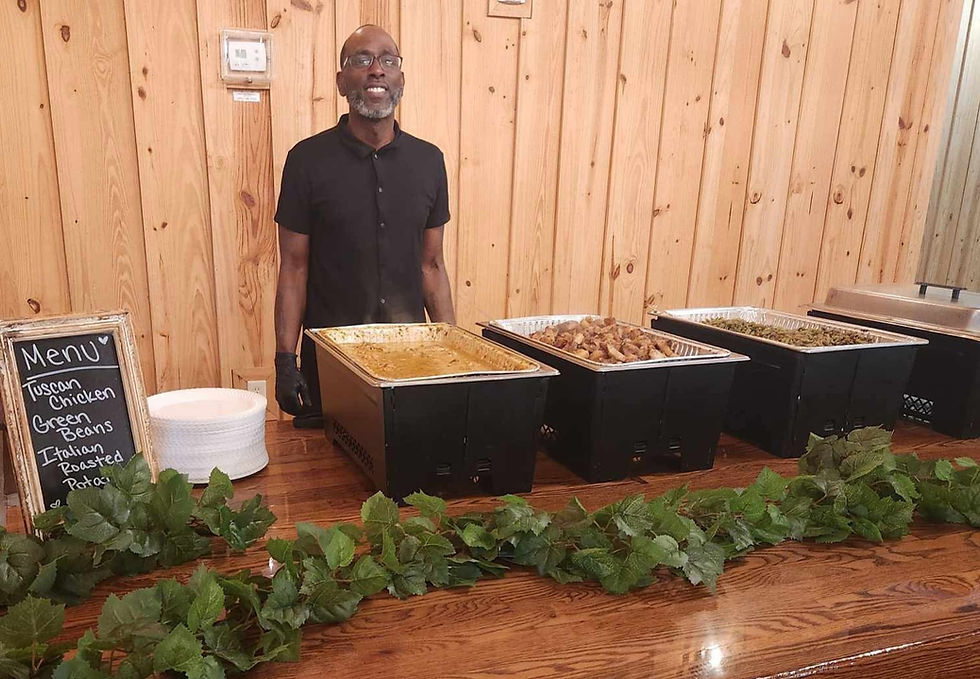The Importance of a Tasting: How to Ensure Your Wedding Menu is Perfect
- Lighthouse Catering Team

- Aug 23, 2024
- 3 min read
When it comes to planning your wedding, choosing the right menu is one of the most important decisions you’ll make. After all, the food is a central part of your celebration, and you want it to be delicious, memorable, and reflective of your tastes. That’s where the all-important tasting comes in. A tasting is your opportunity to sample the dishes that could be served at your wedding, ensuring everything is just as you envision. Here’s why a tasting is essential and how to make the most of it.
Why a Tasting is Crucial
Ensure Quality and Flavor
The tasting is your chance to experience the quality and flavor of the food firsthand. You’ll get to see how the dishes are prepared, presented, and most importantly, how they taste. This ensures that the food meets your expectations and is something your guests will rave about long after the wedding.
Personalize Your Menu
During the tasting, you can work with your caterer to customize dishes to your liking. Maybe you prefer a different seasoning, a variation on a sauce, or a completely different dish. The tasting allows you to make those adjustments so that your menu is a perfect reflection of your tastes and preferences.
Understand Portions and Presentation
Seeing how the food is presented and understanding the portion sizes is another key benefit of a tasting. You’ll get a clear idea of what your guests will see and experience, and you can make adjustments to ensure everything looks as beautiful as it tastes.
Get to Know Your Caterer
The tasting is also an opportunity to build a relationship with your caterer. It’s a chance to ask questions, discuss any concerns, and get comfortable with the team that will be serving you and your guests on your big day. A good rapport with your caterer can ease any pre-wedding jitters and ensure smooth coordination.
Experience the Full Menu Flow
The tasting allows you to experience how different dishes work together in the flow of your meal. You’ll be able to see how appetizers, main courses, and desserts complement each other, ensuring a cohesive and balanced dining experience for your guests. This helps you decide on the order of service and make any adjustments to create a seamless culinary journey from start to finish.
How to Make the Most of Your Tasting
Come Prepared
Before your tasting, discuss your menu options with your caterer and make sure you’re clear on what dishes you’ll be sampling. Bring any notes, ideas, or preferences you have to the tasting, so you can make the most of your time.
Take Notes
During the tasting, take notes on what you like, what you don’t, and any changes you’d like to see. This will help you make informed decisions and ensure your final menu is exactly what you want.
Bring a Trusted Opinion
Consider bringing someone whose opinion you trust, like your partner, a family member, or a friend. They can offer a different perspective and help you make decisions.
Ask Questions
Don’t be afraid to ask questions about the ingredients, preparation methods, or alternatives. This is your chance to get all the details and make sure everything is up to your standards.
Consider the Full Experience
Think about how the food will fit into the overall flow of your wedding. Consider the timing of the courses, how the food will be served, and how it will complement the rest of your wedding day.





McMenu Guide is a one-stop hub for McDonald’s enthusiasts, offering up-to-date insights on menu items, prices, and nutritional facts. Explore everything from classic burgers to seasonal specials, all neatly organized for easy browsing. Perfect for meal planning, discovering new favorites, or simply staying informed about McDonald’s offerings worldwide.